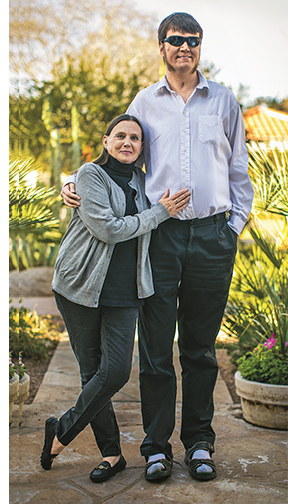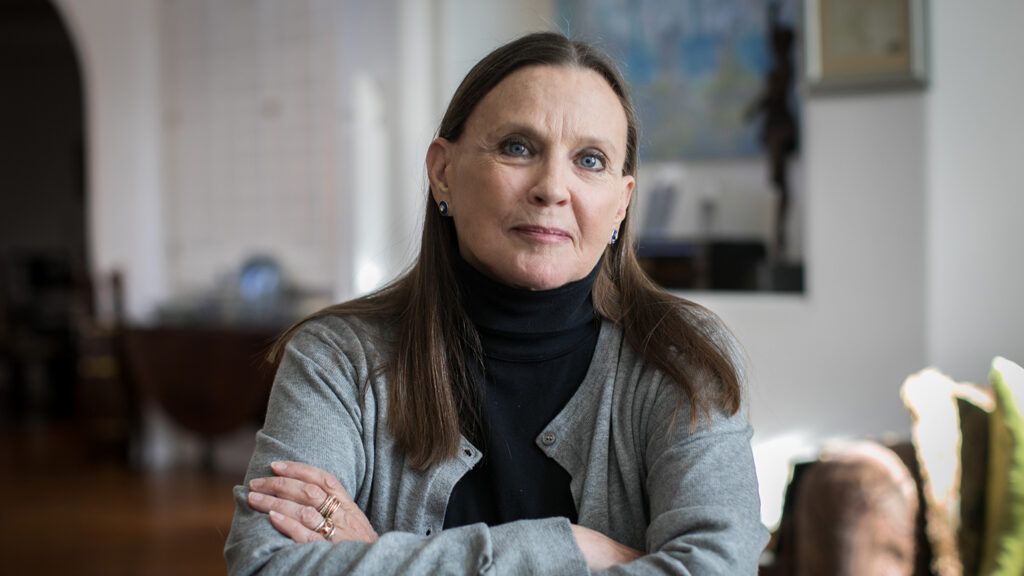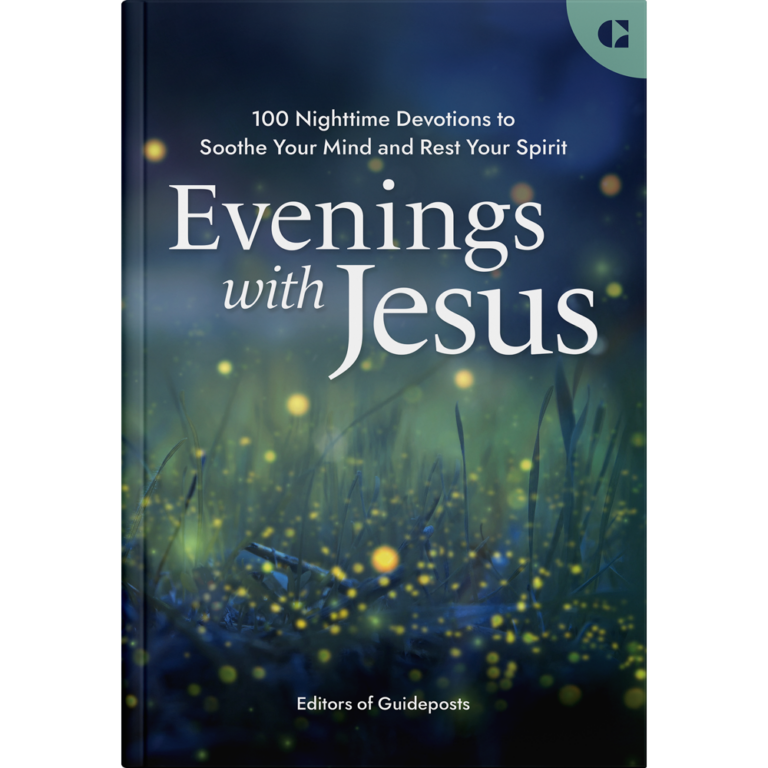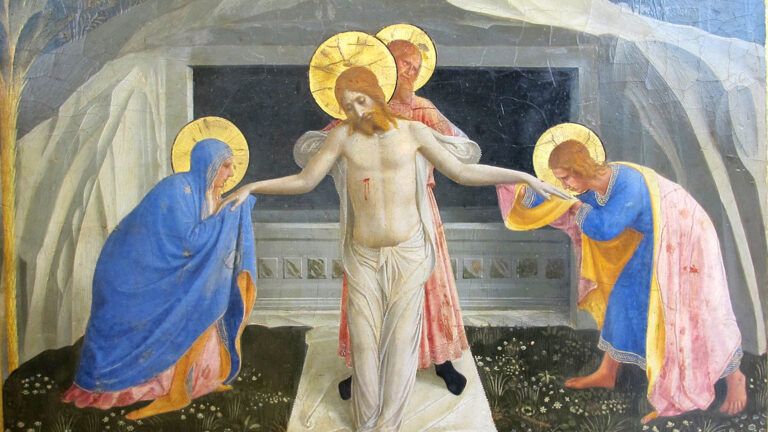You guys know why you’re here, right?” I strode across the wood floor and spread my arms. The kids in the room stood with their backs hunched, eyes downcast to avoid looking at the wall lined with mirrors. I could see their anxiety.
It reminded me of how I’d felt as a little girl on Good Friday. I’d loved going to church. Except for Good Friday. The pre-Easter service filled me with dread. The sanctuary was dark, the cross in the center covered with a shroud. There was no singing or communal Eucharist. Everyone was solemn and silent.
Kind of like the kids in front of me at the dance studio. Lord, help me show them the truth about who they are. I asked. Like you helped me with Chris.

Chris was my 18-year-old son. “He’s going to be a basketball player!” a friend exclaimed the first time she saw him as a toddler. Other friends told me that his long fingers meant he was destined to be a pianist or a swimmer. Sweet compliments. But inside I knew. Something wasn’t right.
I’d known about Marfan syndrome, a rare genetic disorder that affects the body’s connective tissue, for years. As a little girl, I’d had an unusual celebrity crush…on Abraham Lincoln. I’d read that experts believed he may have suffered from Marfan, which would explain his gangly body.
At the time, there was no genetic test to confirm whether Chris had the disorder. Doctors gave me conflicting opinions. All any of us could do was wait for symptoms to manifest. And manifest they did. Chris’s eyesight was poor. His spine began to curve. By the time he was six, it was official. Chris had Marfan syndrome.
The trajectory of my life changed with his diagnosis. Before having Chris, I’d been an award-winning dancer, singer and actress. I’d made my Broadway debut in Cabaret at age 19, and the legendary choreographer Bob Fosse soon became my mentor. I went on to star in shows like A Chorus Line, Chicago and Sweet Charity and in movies such as Annie and All That Jazz. But when I got pregnant, I was ready to retire. My husband and I were then living in Florida, and I was running the Broadway Theater Project, a performance program for high school students.
Marfan changed everything. I needed to go back to work to provide for Chris’s care; the situation became even more urgent after his father and I divorced. Only one place had the best performance opportunities and medical care in the world. I moved back to New York City with Chris. He had one procedure after another. Physical therapy. Heart monitoring. Scoliosis required rods to be put in his back. Four operations on his right leg. Three eye surgeries. More back surgeries. Surgery to replace part of his aorta, the large artery that carries blood away from the heart.
Medically, our move to New York made sense. Spiritually I struggled. I missed our Florida church community. Marfan magnified the normal anxieties of motherhood until they threatened to overwhelm me. Chris looked different from other kids. Would he be able to make friends? Would he find a place where he belonged?
I wanted Chris to have a haven to turn to when life got tough, and for me that haven had always been my faith and the church. I wanted him to feel the somber dread of Good Friday and experience the joy of Easter Sunday, when the shroud was lifted and the sanctuary covered in flowers. I remembered exclaiming to my mother when I was little, “How did they do this? It was so sad on Friday. And now it is wonderful!” I’d thought it was a miracle.
Now I needed another miracle—for myself and for my son. If we were really going to make New York home, we needed to find a spiritual community.
I enrolled Chris in Sunday school at the Church of Heavenly Rest, on Manhattan’s Upper East Side. The first time I walked up to the church to drop him off, I felt that Good Friday dread welling up inside. What if someone made fun of Chris? What if the teacher didn’t reach out to him?
The moment I walked through the imposing wooden doors, I was greeted by a woman. “I’m Pippa!” she said brightly. “And who is this little guy?”
He clung to me. “This is Chris,” I said.
Pippa walked us to Chris’s class and introduced me to his teacher. “He’s in good hands,” she assured me.
I had my doubts. Chris stood out. He was taller than the other kids and looked older. Would they accept him? Would the priests know how to interact with someone so different? Chris seemed to like school, but I still worried.
On Palm Sunday, my nerves were at an all-time high. The church was celebrating by giving each parishioner a palm and having us march in a parade around the block.
“Can I walk with the other kids?” Chris asked. I nodded, trying not to let my worry show. What if they ignored him? Or, worse, mocked him?
I took a palm from the priest and stepped onto the sidewalk. The sidewalk was crowded. I clutched the palm in my hands and stood on tiptoe, keeping an eye on Chris. He was ahead of me with a few other kids.
The procession was led by a man holding a banner. Behind him, choir members in long red and white robes rang bells as they walked. The younger children had maracas and shook them as they ran down the sidewalk. All I could think about was Chris. I craned my head to get a glimpse of him. Was he okay? What if he was looking for me?
He was talking with some of the kids. At one point, the teacher leaned down to say something and Chris laughed.
“He fits right in,” Pippa said.
I held the palm to my heart and watched as my son exchanged smiles with his new friends. He had found a place where he belonged. In fact, we both had. My Easter miracle had arrived a week early.
During Chris’s teenage years, when the differences in his appearance became starker, our church friends made sure there was a place for him. He took confirmation classes with his friends and was confirmed at age 14. He played Lazarus in the church play. He carefully set bananas at each plate when the church served meals for the less fortunate. He was never the odd man out.
Walking down the street, I’d sometimes hear people whisper, “What is wrong with that kid?” At church, no one whispered or stared. Chris was accepted—and loved—just as God made him.
Our church community’s embrace of Chris’s differences inspired me to celebrate beauty and uniqueness wherever I found it. That’s how I’d ended up in that room full of frightened teenagers—at a national conference of The Marfan Foundation.
Those teens were there because I had choreographed a dance specifically for them. My background as a dancer helped me see the beauty of elongated figures. Part of a choreographer’s job is creating the right dance for the dancer’s body. I’d trained for this special assignment my whole life! I choreographed a dance that would highlight the long-stemmed and lithe bodies of Marfan kids.
“You know why you’re here?” I asked. “You’re here to celebrate the beauty and grace of your bodies. You’re here because you’re unique and beautiful. If you were a Giacometti or Modigliani, you’d be worth millions of dollars!”
No one moved.
“Can anybody here make their knees go flat on the ground?” I asked. “It’s a lovely move. Chris, can you show them?”
Chris smiled and dropped to the floor. He lay down with his knees together and his lower legs straight out to each side in an L shape. Because Marfan had given him flexible joints, his knees stayed flat against the floor.
“Can anybody else do that?” I asked. A couple kids nodded. “Wonderful! Let’s get to work.”
I spent a week working with the kids, watching them dance and laugh and become close friends. On our final day together, we filmed the dance for a documentary being made about Marfan syndrome.
Choreographing that dance was like Easter Sunday all over again. I found beauty and joy in the disorder that had once filled me with anxiety and dread. Dance is all about taking what you have and making it work. That’s what life is all about too. My son, and my faith, remind me of that day after day.
For more inspiring stories, subscribe to Guideposts magazine.






